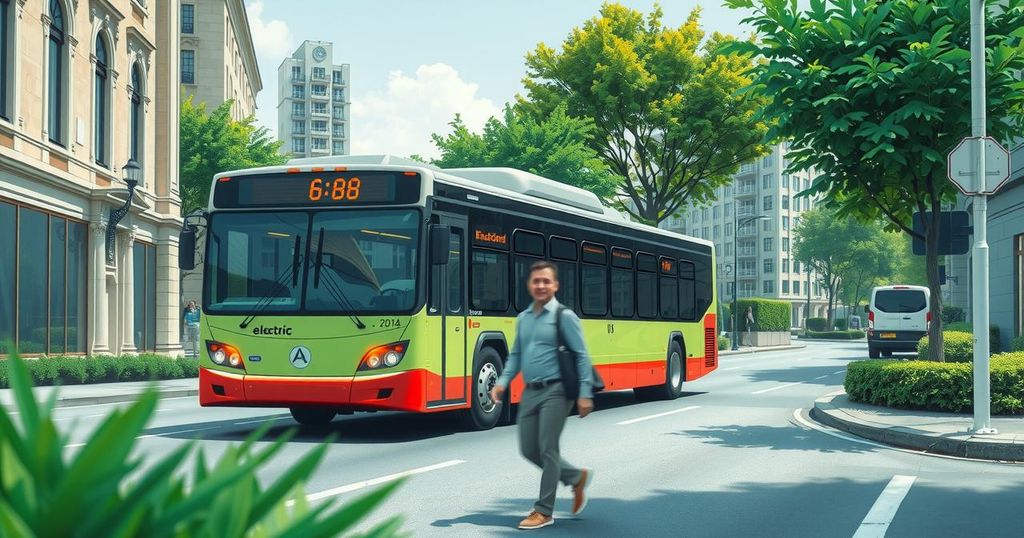Chinese Electric Buses Drive Sustainability in Santiago, Chile
Chinese-made electric buses are significantly reducing CO2 emissions and noise pollution in Santiago, Chile. The initiative showcases sustainable transportation efforts, contributing to cleaner air and healthier urban living. As this shift occurs, it may inspire similar actions in other Latin American cities.
In Santiago, Chile, the introduction of Chinese-made electric buses is making notable strides in both reducing carbon dioxide emissions and minimizing noise pollution. This initiative aligns with the city’s broader efforts to promote sustainable transportation. With urban areas continuously facing environmental challenges, these electric buses emerge as a practical solution to combat air pollution and improve public health.
Local officials have observed that the new fleet of electric buses has already led to a significant decrease in toxic gas emissions. As the city grapples with the pressing need for cleaner air, the transition to electric public transit signals a positive change. The operational efficiency of these buses complements Santiago’s aspirations for a greener urban environment.
Additionally, the electric buses are designed to be quieter than their diesel counterparts, further contributing to a more peaceful urban ambiance. Residents have voiced their appreciation for the reduction in both emissions and noise, highlighting how this impacts their daily lives. The buses not only represent technological progress but also reflect an increasing commitment to environmental responsibility.
This move has garnered attention beyond just transportation metrics. As Santiago embraces these innovations, it sets a precedent for other cities in the region. Other South American countries may view this as a model to follow in their sustainable transit efforts. There is a sense that with Chinese technology becoming evident in public transport, cooperation between nations may enhance the adoption of green technologies worldwide.
Despite initial investments, the long-term benefits of these electric buses—both economic and environmental—are likely to outweigh the costs. Maintaining this fleet and expanding it could open doors to further investments in electric vehicle infrastructure within Chile. More broadly, such advancements indicate a shift towards a more sustainable future in urban layouts, influencing transport policies far and wide.
In summary, the deployment of Chinese electric buses in Santiago is a significant leap toward reducing emissions and enhancing city living. The initiative not only benefits the environment but also highlights international collaboration in addressing global climate challenges. Santiago’s example could serve as an influential case in the broader narrative of urban sustainability and innovative transportation solutions.
The introduction of Chinese-made electric buses in Santiago, Chile, represents a crucial step in combating urban pollution. These buses promise to reduce emissions and noise, contributing positively to the city’s environment. As public transport shifts toward more sustainable solutions, Santiago may inspire other cities to follow suit, highlighting the power of international cooperation in addressing climate change.
Original Source: english.anhuinews.com




Post Comment